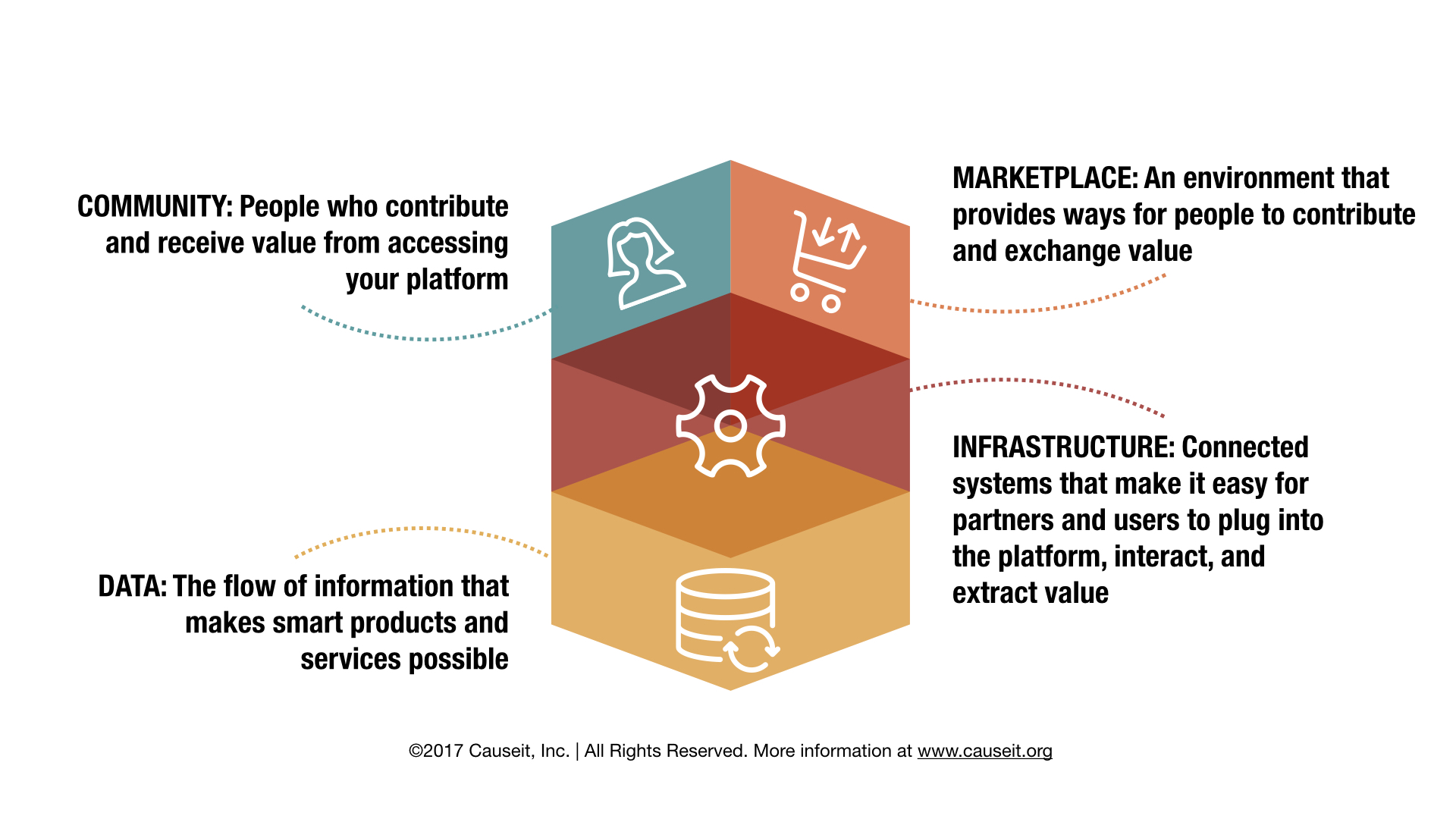Key Points
To stay competitive, companies need to evolve traditional business models.
This requires a mindset shift from being a product-centric company to becoming a platform-driven one.
The multi-sided platform (MSP) model allows all parties to both create and extract value.
Steps to develop a MSP: Make the mindset shift, get clear on your true value proposition, develop a community marketplace strategy, and build a roadmap for data and infrastructure to support that vision.
Just as the Industrial Revolution upended manufacturing 250 years ago, the Digital Revolution continues to evolve business as we know it. But rather than making existing processes more efficient—for instance, replacing hand tools with power-driven machines—the Age of Data leverages technology to create entirely new sources of value.
In this context, traditional business models based on a company’s production and sale of a singular product or suite of products are outdated. Forward-thinking companies may be aware of this and seek to shift from a product-centric mindset to a more platform-centric one, but often they don’t know where to begin.
Inspired by Mark Bonchek and Sangeet Paul Choudary’s Harvard Business Review article on the topic, Causeit has created this guide. We hope it will help you understand new expectations of today’s customers, flesh out what it means to become a platform-centric company, and identify next steps to apply this new model to your organization.














